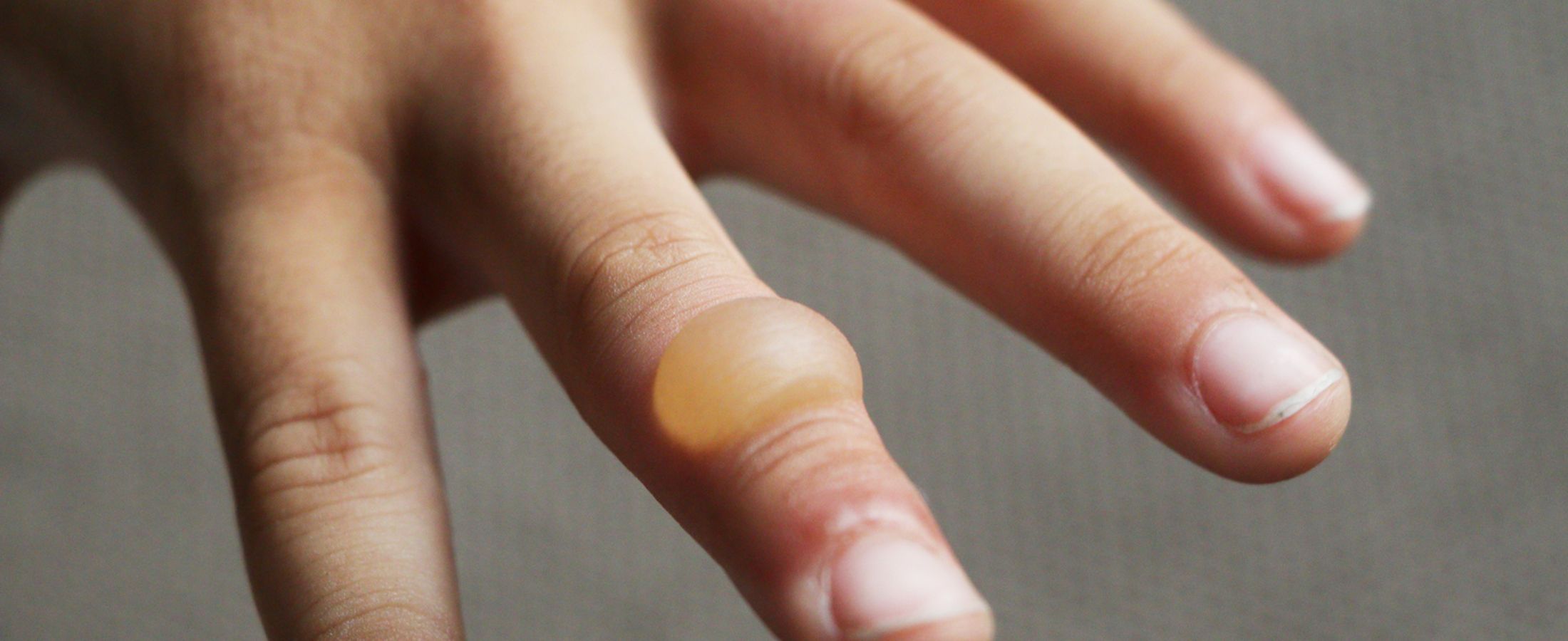
Vesciche? Curale così
Bentornati ad un nuovo appuntamento con le news del blog di PVS!
Sicuramente ti sarà capitato di avere delle vesciche: fastidiose e a volte dolorose, queste piccole bollicine possono essere davvero insidiose da curare e da proteggere. Tuttavia, se si conoscono i passaggi per curarle, possono andare via in pochi giorni.
Grazie a questo articolo letto su band-aid.com, scopriamo come individuare, trattare e proteggere in maniera corretta le vesciche che possono formarsi sulla pelle.
Cosa sono le vesciche?
Per vescica si intende una protuberanza più o meno estesa che può formarsi sulla pelle (tipiche sono quelle che si formano vicino ai piedi, ad esempio a causa di scarpe strette o scomode). Sembrano delle vere e proprie bolle che all’interno presentano un liquido acquoso e trasparente, ma a volte anche del sangue (segno che un vaso sanguigno è stato danneggiato).
Nonostante le vesciche siano per antonomasia scomode e davvero fastidiose da sopportare, hanno una sorta di funzione curativa per il corpo umano, perché permettono alla pelle di proteggersi da ulteriori danni e infezioni.
Grazie alle tecniche corrette e a un buono e puntuale bendaggio, le vesciche possono creare poco fastidio e andare via in pochi giorni.
Come trattare correttamente una vescica
I punti più comuni in cui compaiono le vesciche sono le mani e i piedi – in particolare sulle dita. Ma, ovviamente, esse possono comparire su varie parti del corpo. La buona notizia è che il processo per curarle è pressapoco lo stesso per tutte.
Solitamente le vesciche vanno via da sole, ma ecco cosa si può fare per accelerare la guarigione e sentirsi meglio.
1. Lava delicatamente l’area dove si è formata la vescica. Utilizza acqua tiepida e un sapone neutro, facendo attenzione a non sfregare troppo la vescica con le dita – il rischio è di farla scoppiare.
2. Se la possiedi, applica una crema antibiotica per accelerare la guarigione dell’area e minimizzare i rischi di infezione.
3. Copri delicatamente la vescica con un cerotto, una benda e una garza. Osserva più volte durante la giornata il tuo bendaggio: se lo vedi macchiato o percepisci la rottura della vescica, sostituisci immediatamente il bendaggio.
4. Pulisci la vescica e cambia la tua medicazione almeno una volta al giorno.
E se la vescica dovesse aprirsi? Niente paura!
Lava delicatamente l’area dove si trova la vescica e non togliere il lembo di pelle che conteneva il liquido (a meno che sotto non noti sporcizia o pus, sinonimo di infezione in corso!).
Appiattisci il lembo di pelle che si è staccato dalla superficie e “bloccalo” con un cerotto. Infine, cambia la medicazione spesso – ogni volta che si bagna o si sporca.
Sapevi come si trattano e curano le vesciche?
Questi e molti altri consigli sono disponibili per i rivenditori dei prodotti firmati PVS Spa come i nostri cerotti, le bende e tutta la gamma completa di primo soccorso e non.
Vuoi diventare nostro rivenditore? Sei interessato alla nostra vasta gamma di prodotti? Per queste e altre informazioni, contattaci facendo click qui.




